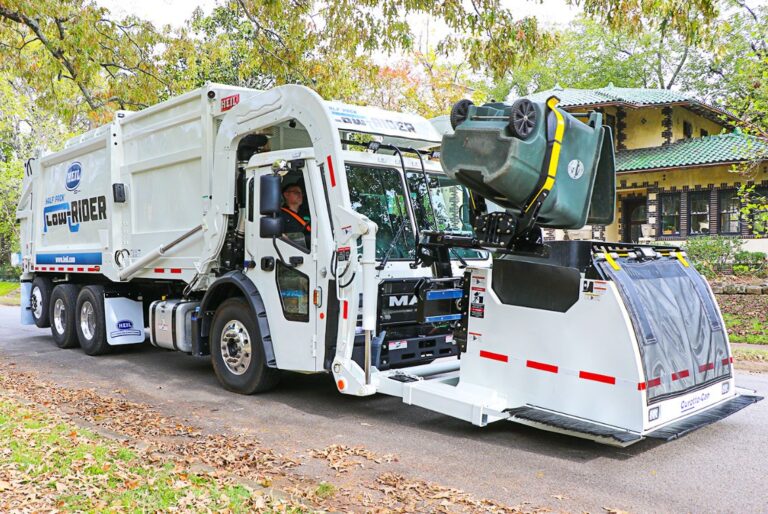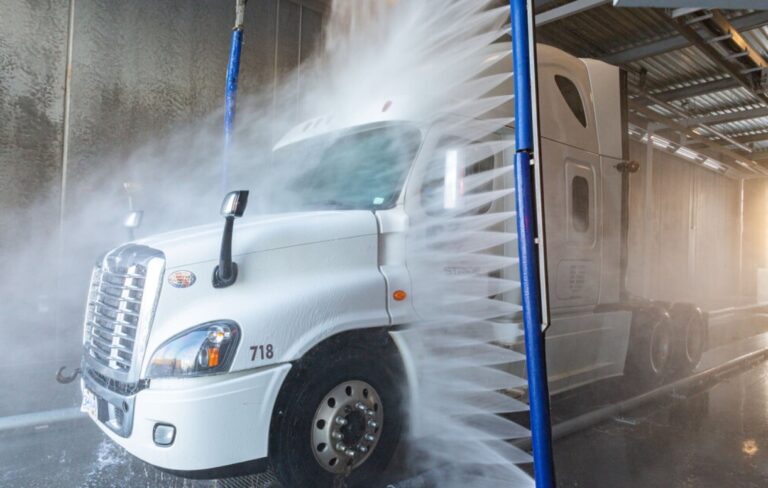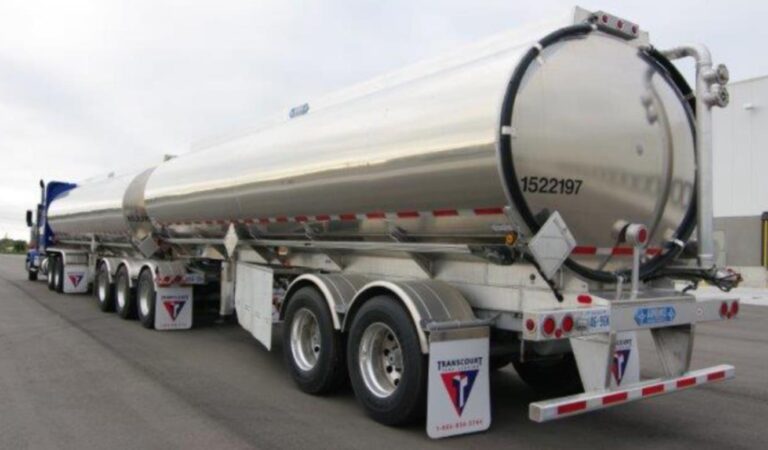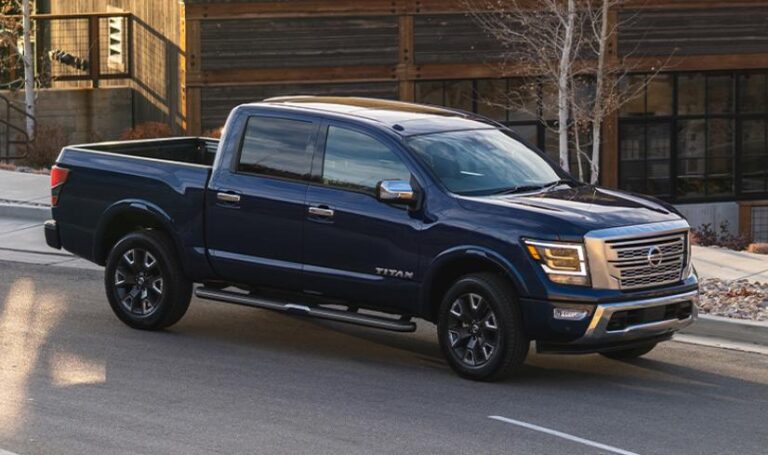New 14-Hour Rule For Truck Drivers (All You Need To Know)
Drowsy and exhausted drivers present a risk to both themselves and other road users. These New 14-Hour Rule For Truck Drivers are known as hours of service regulations by the FMCSA and the Department of Transportation (DOT).
To protect drivers and make sure they are only driving for a short time without stopping for a break, strict Hours of Service regulations were established, such as the DOT 14-Hour Rule.
Table of Contents
New 14-Hour Rule For Truck Drivers
How long commercial drivers can work in a day is specified in the DOT 14-hour guideline. The rule states that drivers must cram their whole day’s worth of driving into a 14-hour shift. After spending 14 hours on duty, they must take a 10-hour break.

Although it appears simple, there needs to be more understanding regarding the number of hours drivers drive throughout these 14 hours. Although these hours are not connected to a 24-hour clock, the 14-hour window is typically considered the maximum number of hours per day.
When a truck driver or any other fleet driver begins working, not when they start driving, is when the 14-hour driving time starts. And do you still recall the part about required breaks? The 11-hour rule is applicable in this situation.
What Is The 11-Hour Rule?
Within the 14-hour limit, the 11-hour rule applies. A driver’s complete shift, including driving time and break time, is covered by the 14-hour logbook requirement.
This only accounts for the driving time during the 14 straight hours, not the ten-hour mandated break following the 14 shift. The 11-hour rule stipulates that during a 14-hour shift, a motorist may not drive for more than 11 hours total.
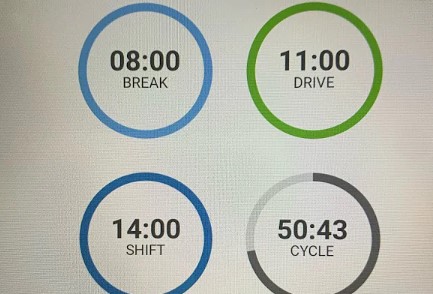
As a result, three of the 14 hours are considered non-driving or breaks. As long as the driver does not drive more than 11 hours straight, these breaks may be distributed throughout the 14-hour shift in any way they see fit.
In addition, after eight hours of driving, drivers must take a 30-minute rest. The 30-minute time limit is rigorously adhered to. The rest period is interrupted, for instance, if a driver is required to relocate their car while they are in the sleeper berth when the ELD notices the ignition turning on.
The 30-minute break policy only applies during driving hours. After eight hours of driving, drivers can do non-driving jobs like loading or unloading. So, rather than using the off-duty status, they can employ the on-duty, not-driving status.
What Is The 70-Hour Rule?
In addition to the two laws mentioned above, there is also the “70-hour rule,” which specifies that drivers cannot drive more than 70 hours in a row, whether working or not, for eight days.
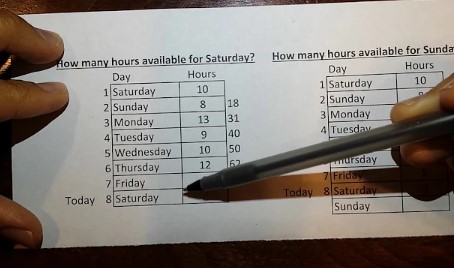
After the driver has spent 34 hours in a sleeper berth or during off-duty time, the clock for the 70 hours is reset. The 60-hour rule is another version of the 70-hour rule. This regulation establishes a seven-day, 60-hour maximum on-duty period.
16-Hour Exception
The 16-hour rule is an exception to the aforementioned 14-hour rule. If property-carrying drivers start and end their workdays at the same site for the previous workweek (or the previous five workdays), they may continue to be on duty for 16 hours instead of 14 hours.
This enables drivers to complete additional paperwork or perform more maintenance tasks at a home base location.
Note that the 11-hour driving limit is still applicable despite the 16-hour regulation. You can only drive for 11 hours nonstop before taking a 10-hour break. You can use the extra time provided by the 16-hour guideline to work on career-related tasks that don’t involve transportation.
The commercial driver must be released from duty as soon as the 16th hour is over if a driver uses the 16-hour exemption. No matter your driving contract, you can only use the 16-hour exception once every 34-hour restart cycle.
The short-haul exceptions, which exclude drivers from using electronic logbooks (ELDs) to monitor their movements if they operate within a 150-air-mile radius of their usual reporting place and do not drive longer than the 14-hour maximum on-duty period, may also be used by short-haul drivers.
Interstate Vs Intrastate
It’s crucial to comprehend the distinctions between intrastate and interstate driving regulations.
Between the states, there is interstate commerce. You engage in interstate commerce if you deliver goods from one state to another or vice versa. Only the same state can be the subject of intrastate commerce. If you pick up a load in one location and deliver it in another, both locations are within the same state; you are engaging in intrastate commerce.
You only need to adhere to your state’s motor carrier safety laws if you engage in intrastate business. If you follow federal DOT Hours of Service regulations, you can only drive for 11 hours; however, in Texas, you can drive for 12 hours after taking eight hours off or rest.
The Importance Of The Ability For Drivers To Pause Their 14-Hour Clocks
Drivers were allowed to stop their 14 hours of on-duty time for several hours every shift as part of a revision to the HOS rule that went into effect in September 2020. Now, drivers can divide their ten-hour break into two 8-hour blocks or opt for the new 7-hour block.
In contrast to the previous regulations, the shorter break does not count toward the drivers’ 14 hours of on-duty time. (Drivers’ hours already do not include the 8/2 split.)
Drivers who split a duty day must take two splits, each totaling at least two hours and a minimum of seven and seven hours, respectively. The 14-hour on-duty clock will be paused during both of those breaks.
As long as the break time equals ten hours, breaks can be longer than the 8/2 and 7/3 alternatives. Additionally, drivers can entirely reset the 14- and 11-hour clocks if any split’s two breaks total ten hours in length.
Drivers’ schedules can be optimized by using this rule change. For instance, it might make sense for drivers to take 10 hours off work to reset their on-duty clock to 14 hours if their break is longer than seven.
Additionally, if a break that was supposed to last three hours instead lasts longer say, four or five hours making it a seven-hour break will allow for greater on-duty and driving hours, depending on the driver’s schedule and rest requirements.
But, the shorter splits allow drivers to halt their 14-hour clock for as long as they like, as long as they take another break to go along with the earlier one. Also, breaks must be at least two hours and a maximum of seven hours to count as ten or more hours off-duty. The schedules of drivers become more flexible as a result.
Tracking Solutions For HOS
Drivers must have an electronic logging device (ELD) with FMCSA approval installed, according to the 2017 ELD rule. The ELD accurately records the hours the driver works by automatically keeping track of the time. On December 16, 2019, the final compliance date passed.
Ensuring that commercial drivers followed the HOS regulations before the ELD mandate was virtually impossible. Because logbooks were kept on paper, they were more likely to be manipulated or erroneous.
The ELD mandate stops risky behaviors and establishes a common standard that makes HOS tracking more precise and simple. For additional information, see our ELD terminology glossary.
Who Must Follow These Rules?
This HOS legislation is a crucial component of commercial driving. They apply to the majority of modern commercial drivers. Drivers of commercial motor vehicles (CMVs) engaged in interstate commerce must adhere to HOS regulations if their fleet vehicle:
- Ten thousand one pounds or more in weight.
- Has a 10,001-pound or higher gross vehicle weight rating or gross combination weight rating.
- Transports any quantity of placard-required hazardous chemicals.
- Is used or intended to transport more than sixteen passengers, including the driver, without payment.
- Is used or intended for the compensation-based transportation of 9 or more passengers, including the driver.
Interstate commercial drivers must abide not just by federal restrictions but also by state HOS laws. Verifying that their ELD conforms with federal and state requirements is one of the most crucial things a driver can do.
How Does This Relate To The 11-Hour Rule?
The 11-hour and 14-hour rules are intertwined, as was already established, and they both influence one another.
The truck driver’s complete shift, which consists of both driving time and shorter breaks in between, is defined by the 14-hour logbook rule. According to the 11-hour rule, a driver cannot spend more than eleven hours behind the wheel in a consecutive fourteen-hour period.
The maximum driving time is eleven hours, regardless of how you divide the fourteen hours. In addition, after eight hours of nonstop driving, drivers must take at least thirty minutes break. This is referred to as the 11–14 hour truck driving guideline.
How HOS Are Tracked Today?
Drivers must have an ELD with FMCSA approval on board as of the 2017 ELD regulation. This gadget ensures that the driver accurately records their hours and logs time automatically.
Before the ELD mandate, it was impossible to ensure that commercial drivers operated their vehicles safely and per the law. Because the HOS (Hours on Service) records were kept on paper, changed logbooks were far more common.
These regulations now stop risky business practices in the trucking industry and have established a global standard that simplifies monitoring driver behavior.
Who Must Adhere To These Regulations?
The HOS 14-hour rule and the regulations that go along with it are essential components of modern commercial driving. Most commercial drivers in the nation must abide by these regulations. Interstate drivers must ensure that they follow state HOS regulations and federal laws. Drivers should check their ELDs comply with all rules and guidelines.
Example: The 14-Hour Rule In Action
Understanding how the 14 hours on duty rule operates is crucial to avoid paying the fine for exceeding you’re allowed driving time. Let’s look at an illustration of how a normal day for a commercial driver might be structured.
Your 14-hour clock begins to run when your shift officially begins. Your shift begins when you work for your employer, not just when you start driving.
The clock begins ticking on your driving hours when you hit the road. It would help if you took breaks because you cannot drive for more than eleven hours in any one shift.
The maximum amount of time you may drive without stopping is eight hours, after which you must take a 30-minute rest.
Adverse Driving Conditions Exception
The hazardous driving circumstances exemption is another significant exclusion to bear in mind. According to this exception, truck drivers may extend the 14-hour duty window and the 11-hour driving limit by two hours each if there are hazardous road conditions.
For instance, if a snowfall strikes in the middle of a long-distance freight session, you can continue driving for up to 13 hours instead of 11 to meet your deadline.
Guidelines For Obeying Regulations
Keep a thorough journal of your driving hours to comply with DOT driving hour rules. Doing so lets you track how much time is left in your driving window and how long it will be before you resume driving.
Additionally, it would help if you didn’t try to “combine” your driving windows by driving for 11 hours in the second half of one day and then again from midnight to 11 AM the following morning. Since you need to take a 10-hour break between those two work sessions, doing so would be against the DOT’s driving hour requirements.
Drivers who transport passengers are subject to different regulations regulating the length of their shifts.
Conclusion
The 14-hour rule is a New 14-Hour Rule For Truck Drivers or cap that prohibits freight drivers from operating a motor vehicle (or, more precisely, working) beyond the 14th continuous hour (or 840 continuous minutes) after reporting for duty until they take 10 continuous hours off.
Simply put, you can work continuously for up to 14 hours. It doesn’t matter if you’re in a hurry or carrying something that needs to be kept at a certain temperature. You must take a break for 10 endless hours after 14 hours.
Understanding what the Department of Transportation considers to be “on duty” and “off duty” is crucial. Put, “on duty” refers to any work you perform on your truck or in connection with your job. As a result, if you check your car, document your activities, or phone customers, you are still on duty.
After being on duty or working for 14 hours straight, you cannot engage in those activities for 10 hours. Additionally, you must take a 30-minute break after eight hours of driving time by the Federal Motor Carrier Safety Administration’s hours of service regulations. These apply to both short- and long-distance commercial motor vehicle operators.
Frequently Asked Questions
How can my 14-hour clock be stopped?
The rest period must be used either while not working or sleeping (or both). After the 11th hour of driving or the 14th hour, no driving may be done during the period immediately preceding or following the break.
What does a 14-hour clock mean?
On a 12-hour clock, 2:00 PM equals 14:00 on a 24-hour clock. This system, which is employed by everyone (not just the military), uses a 24-hour time clock instead of the 12-hour AM/PM system common in most English-speaking nations.
What does the “8-2 split rule” mean?
The 8/2 split stipulates that a driver may operate a motor vehicle for up to six hours, followed by a two-hour break from work, before operating a motor vehicle for five more hours.

Welcome to the exhilarating world of Matt Rex, a professional car racer turned renowned vehicle enthusiast. Immerse yourself in his captivating blog as he shares heart-pounding adventures, expert reviews, and valuable insights on cars, trucks, jets, and more. Fuel your passion for speed and discover the beauty of vehicles through Matt’s engaging stories and meticulous expertise. Join the ever-growing community of enthusiasts who find inspiration and expert advice in Matt Rex’s blog—a digital hub where the thrill of speed meets the pursuit of knowledge.

